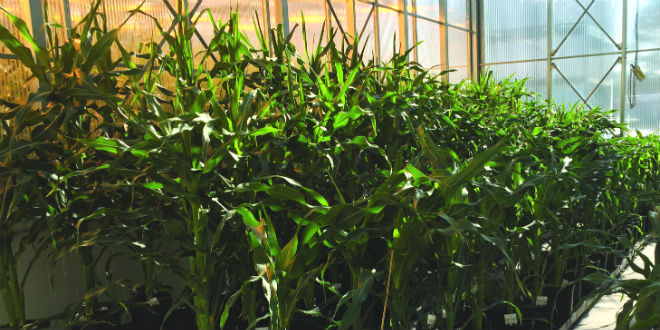Feb 6, 2017Howler puts AgBiome in market position
AgBiome, a biotechnology company, said it has compiled the world’s largest collection of fully sequenced and annotated microbes from the plant microbiome – the microbial communities in, on and around plants – and the company continues to screen this collection with validated, proprietary pipelines to discover new biologicals and trait genes.
The company is currently focusing on the eventual commercialization of its first product, Howler. Howler is advertised as a biological fungicide. It is a natural microbe developed to provide soilborne disease control to crop fields. It prevents the growth of fusarium wilt and soybean rust, as well as other major fungal pathogen- based diseases that affect a wide variety of economically important produce crops around the world.
According to AgBiome, Howler has the potency and efficiency of standard chemical-based fungicides, but without the side effects. The company also claims the product has curative properties, allowing the restoration of already affected crops.
“We’re looking at getting approved for (2017) sales,” said John Rabby, commercial director of AgBiome Innovations. The approval process will take a bit longer in California, Florida and New York.
“The launch will be a whole message around an efficacy, database driven position,” Rabby said. “It’s not being referred to as biological. The only way you’ll see it as a biological product is the word ‘fungicide’ will be in green on the package. All of our products are going to have a very efficacious message – comparable to whatever it may be depending on what crop and what disease. We’re going after the synthetic guys.”
The shelf life of Howler will be two years or more, offering advantages over other products on the market, Rabby said. The product will provide efficacy on both conventional and organic crops, he said.
“There is a poor perception about biologicals – they’re grouped into a lot of things,” Rabby said. “We don’t want to be a part of that clutter. We’re about performance chemistry. We’re about killing weeds or bugs or insects. We’re focused on the innovations.”
Steve Ronyak, field biology manager who oversees the greenhouse at AgBiome, said the company is “looking to have products that compete with synthetic chemistries.”
He said Howler’s characteristics include enzymes that affect the pathogen itself, breaking down the skeleton of the fungus. It is an actual living organism, excluding pathogens from the plant area. Its rapid colonization keeps pathogens from entering the plant itself.
Ronyak showed data from among more than 130 trials – including third-party reviews – touting Howler’s “very broad spectrum” efficacy in combating tomato and pepper botrytis, powdery mildew in cucumbers and other diseases.
It also controls botrytis in postharvest strawberries, allowing for longer shelf life, and measured up to or outperformed conventional treatments in several comparison trials.
“Howler did a very nice job in controlling the impact of wounds in apples in postharvest settings,” Ronyak said. “It controls the entry point for fungal pathogens.
“On crops from fruits and vegetables, ornamentals, turf, row crops and everything in between, there’s a lot of activity from Howler,” he said. “Howler consistently has a yield very comparable to non-inoculated checks. It tells me from a yield and harvest standpoint Howler does a really good job of restoring yield as if the disease wasn’t there. We can’t say Howler is going to be the best against all diseases – because it’s not – but it competes very well against conventional chemistry and against all diseases tested.”
“Howler is going to be a good tank mix partner for a lot of conventional products, complimenting it with several modes of action,” Ronyak said.
“It’s efficacious from an organic side as well as from a conventional side. That’s a pretty effective selling point right there,” said Ted Piatt, who directs AgBiome Innovations sales and distribution channel strategies. He has 35 years of experience in the agricultural and turf and ornamental industries. “It will be labeled as a broad- spectrum on a large variety of crops.
“We’re going after specialty, high-value crops,” Piatt said. “We’re also taking a good, hard look at using the product on seed treatments in the future.”
— Gary Pullano, associate editor















